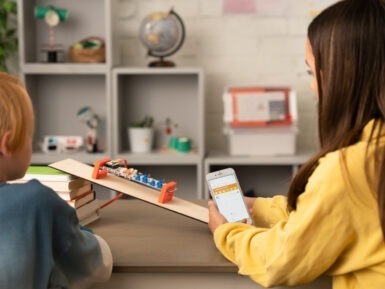
Overview
These sensors are of the latest generation and measure:
- Atmospheric pressure
- Temperature and humidity
- Light intensity (in LUX, max 650)
To help you build projects and store the data collected locally, this shield has a slot for a microSD card (not provided).
There is a ready to use library with examples and methods to read values from the different sensors, that provides an easy and smooth integration path.
Sensors used :
Tech specs
| ICs |
LPS22HB |
| Input Voltage | 3.3V |
| Operating Voltage | 3.3V |
| Ranges |
Pressure: 260 to 1260 hPa |
| Communication | I2C/Analog |
| Length | 61 mm |
| Width | 25 mm |
| Weight | 32 gr. |
Conformities
Resources for Safety and Products
Manufacturer Information
The production information includes the address and related details of the product manufacturer.
Arduino S.r.l.
Via Andrea Appiani, 25
Monza, MB, IT, 20900
https://www.arduino.cc/
Responsible Person in the EU
An EU-based economic operator who ensures the product's compliance with the required regulations.
Arduino S.r.l.
Via Andrea Appiani, 25
Monza, MB, IT, 20900
Phone: +39 0113157477
Email: support@arduino.cc
Documentation
OSH: Schematics
The Arduino MKR ENV Shield is open-source hardware! You can build your own board using the following files:
EAGLE FILES IN .ZIP SCHEMATICS IN .PDF FRITZING IN .FZPZSensors used :
Learn more
Get Inspired

Stephen Hawking once said, “No one undertakes research in physics with the intention of winning a prize. It is the joy of discovering something no one knew before.” That joy is exactly what we hope to ignite with Arduino’s Science Kit R3, bridging theory with practical exploration with a complete toolbox that science teachers can use to develop hands-on and engaging STEM experiments in the classroom. From the relationship between color and temperature to the effects of electrical currents on magnetic fields, the kit provides a comprehensive learning experience that allows students to interact with the very core of scientific investigations – also through real-time data collection and analysis. By measuring, recording, and interpreting data with the Arduino Science Journal app, the learning process becomes interactive and dynamic. So, how does the Science Kit R3 make physics the coolest subject in school? Enhanced understanding of physics: No more passive reading. Dive deep into physics, understanding complex concepts through hands-on experimentation.Promotion of scientific literacy: The real-time data collection and analysis features nurture scientific inquiry skills, priming students to thrive in our data-driven world.User-friendly design: No prior coding or electronics knowledge is required, ensuring educators and students can jump straight into experiments with minimal setup.Designed for education: The kit has been designed with teachers, for teachers and students.Critical thinking stimulation: The kit’s design encourages students to apply what they've learned to real-world situations, sharpening their problem-solving abilities.Self-directed learning: Through open-ended investigations, we're giving students the reins, allowing their curiosity to guide their learning process.Comprehensive teaching support: The Science Kit R3 isn’t just for students. We've also equipped educators with an intuitive guide to streamline the teaching











